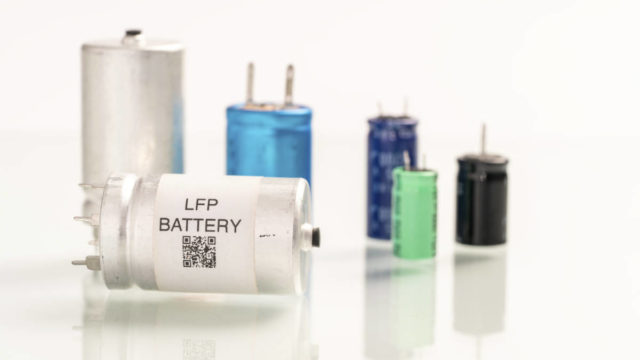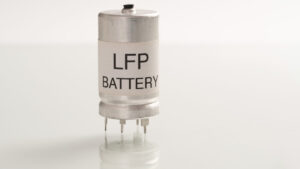- Galaxy Resources increases resource for $608m Sal de Vida lithium project in Argentina
- ‘We remain on schedule for first production in late 2022 although COVID-19 continues to present significant challenges to the team’ Galaxy CEO
- Lithium Australia plans lithium ferro phosphate (LFP) cathode production in India
Galaxy Resources (ASX:GXY) has completed a feasibility update for its Sal de Vida lithium project in Argentina that includes an updated resource estimate and production target.
The lithium company is targeting production of ~32,000 tonnes per year of battery-grade lithium carbonate in a three-stage development plan starting in 2022.
“Completion of the feasibility study marks a major milestone in the development of Sal de Vida,” chief executive, Simon Hay, said.
“Technical and financial outcomes are very positive and confirm that Sal de Vida will be a globally competitive, low cost producer of battery-grade lithium carbonate,” he said.
The Sal de Vida project’s resource estimate has been updated to 6.2 million tonnes of lithium carbonate equivalent, and its estimated reserve is 1.3 million tonnes of lithium carbonate.
The project is located in Argentina’s Catamarca province about 1,400km northwest of Buenos Aires, and is part of the ‘Lithium Triangle’ area covering parts of Chile, Bolivia and Argentina.
Three-stage project development
Galaxy Resources is building its Sal de Vida project in three distinct stages, to reduce development capital risk and to utilise surplus cashflow from stage one for later stages.
“The company’s staged development approach provides a lower risk pathway to a large-scale operation again with compelling financial outcomes,” said Hay.
In the first stage, the Sal de Vida project will have a production capacity of 10,700 tonnes per year for lithium carbonate with 80 per cent battery grade quality.
“We remain on schedule for first production in late 2022 although COVID-19 continues to present significant challenges to the team and remains a risk to the project schedule,” said Hay.
This has a development cost of $US153m and cash operating cost of $US3,500 per tonne, putting it in the lowest cost quartile, according to the feasibility study.
The pre-tax net present value (NPV) of this first stage of the project is $US809m, and its pre-tax internal rate of return is 43 per cent, giving a payback period of two years.
“The project team will now move into the next phase with detailed engineering to commence on the plant and construction of the ponds commencing immediately,” he said.
Cash pile for project funding
Stages two and three of the project will be a replication of its stage one design and construction with the first expansion to start straight after stage one is completed.
The total cost of the project’s three stages is $US466m ($608m) and its cash operating cost is $US3,352 per tonne for lithium carbonate, indicating a pre-tax NPV of $US2.1bn overall.
Galaxy Resources is able to fully fund the first construction stage of its Sal de Vida project from its $US217m cash pile and is currently focused on the plant’s design construction.
The company is focused on developing its Hombre Muerto deposit within its Sal de Vida project which is host to a typical mature salar system.
The Hombre Muerto salar system contains relatively high concentrations of lithium brine due to the presence of lithium-bearing rocks and local geothermal waters associated with Andean volcanic activity.
“The quality of the Hombre Muerto salar is further reinforced by the current wellfield drilling campaign and we are excited about the potential upside that higher lithium brine grades will bring to the project,” said Hay.
Sal de Vida’s brine chemistry has high-grade lithium, low levels of magnesium, calcium and boron impurities and readily upgrades to battery-grade lithium carbonate.
Galaxy Resources aims to undertake further exploration drilling to test the depth of the Hombre Muerto basin on the western side of the salar system.
A revised resource and reserve estimate is expected for this in the September quarter after the completion of current drilling.
Lithium ferro phosphate
Another lithium company, Lithium Australia (ASX:LIT), has also completed a pre-feasibility study for a lithium ferro phosphate (LFP)-based cathode powders project.
The study has demonstrated the performance of the company’s LFP product and the value of establishing an alternative cathode powder supply chain using its proprietary technology.
“Lithium Australia’s subsidiary VSPC has demonstrated its capacity to produce some of the most advanced LFP cathode powders available and also higher energy density variants such as lithium manganese ferro phosphate (LMFP),” managing director, Adrian Griffin, said.
VSPC, a specialist in producing nano powders, operates a pilot facility and research and development centre in Brisbane where it produces LFP and LMFP cathode powders.
“At present, there is little LFP production outside of China, with original equipment manufacturers striving to secure alternative supply chains,” he said.
“Lithium Australia and VSPC aim to provide that supply chain security.”
Indian LFP cathode plant
The company is planning production of 10,000 tonnes per year of its LFP cathode powder over a three-year period at a plant based in India and to reach this level by 2026.
India was chosen in the pre-feasibility study as the location for the LFP production plant as it had the best financial outcome in terms of net present value and financial return.
Over the past year, global demand for LFP has increased by more than 25 per cent, bringing Chinese LFP cathode manufacturing to around 100,000 tonnes per year.
Several factors are driving market demand for LFP cathode powders and include the product’s superior safety and low cost. It also does not require metals mined in world conflict zones.
Lithium Australia has committed to following up the PFS with a definitive feasibility study (DFS) for the Indian project that has a net present value of $US253m for 13 years of production.
Germany-based carmaker Volkswagen recently announced its entry-level EVs will be powered by LFP batteries, and other carmakers have said they will discontinue making batteries from cobalt and nickel metals and switch to LFP batteries instead.
Electric vehicle (EV) producers are moving to incorporate lithium-ion batteries into entry-level vehicles due to their superior safety, lower cost, longer life and reduced exposure to conflict metals, said Griffin.
ASX share price for Galaxy Resources (ASX:GXY) and Lithium Australia (ASX:LIT)
You might be interested in












